Donald Kautz didn’t plan on writing “Mills of Lancaster County,” a 382-page book documenting Lancaster County’s surviving grist mills. At first, he just wanted to take some photographs.
“I started just photographing them,” says Kautz, 69, of East Lampeter Township. “They’re just interesting buildings and, you know, part of Lancaster County’s history that is disappearing. So I started taking photographs of them, and then began to research some of the history, and I realized this is something that should be documented.”
Kautz, a retired software developer, is a lifelong resident of Lancaster County. The photographer and local historian often presents at discussions hosted by local historical societies.

Donald Kautz is a photographer and author of the book "The Mills of Lancaster County" which features color photographs of 100 of Lancaster County's surviving grist mills.
“Mills of Lancaster County’’ is his second book. Kautz’s first book, “The Conestoga River: A History,” was published by the History Press in 2021.
Kautz’s catalog of local mills and their history captures a bygone era of Lancaster County history when, according to Kautz, there was a mill every 2 1/2 square miles. Because of Lancaster County’s many waterways and lush farmland, the milling industry thrived.
Kautz says that there were around 380 grist mills in Lancaster County in the 1840 census. And, at one point, on the aptly named Mill Creek, there were 16 mills in 16 miles along the 26.7 mile-long tributary of the Conestoga River. Entire towns like Akron, Kautz says, sprung up around the mill that was built there in 1762.
During the 18th and 19th centuries, mills were essential to daily life. Farmers brought corn to be turned into cattle feed and wheat to be turned into flour to the local mills. The mills became social hubs for farmers to gather and share news. Some mills even contained post offices.
“There was already a business office of sorts there,” says Kautz, a photographer and retired software engineer. “So, it was kind of an easy thing to put a post office there, and it was one more reason for customers to come to your mill.”
But, like the waterways that powered the mills, time flowed on. As new technology brought changes to the industrial landscape in Lancaster County, many mills went out of business and fell into a state of disrepair.
For “Mills of Lancaster County,” Kautz compiled a list of 100 surviving Lancaster County grist mills organized by watersheds. Their state of preservation varies greatly.
“That ranges from museum-quality to ruins that are about to fall down,” he says.
Kautz’s book documents the mills in full-color photographs with timelines, stories, interesting facts and historical records of each of the mills. To write the book, Kautz says he referenced Arthur Lord’s 1996 book “Water-powered Grist Mills, Lancaster County, Pennsylvania,” as well as tax records, census data and interviews with current mill owners and local historians.
Adam Zurn, who runs the local history website Uncharted Lancaster, joined Kautz on some mill research excursions. He appreciates that the book discusses what he believes are “seldom-discussed mill-related topics,” like their environmental impacts.
“Something I found very interesting in Don’s book, and I quote, is that ‘The major source of sediment in the Conestoga watershed is not coming from present-day runoff but is rather coming from centuries-old runoff that had been collected in mill ponds,” Zurn says.
Another fact from the book that Zurn found interesting is that “flour dust, under the right conditions, is more explosive than gunpowder.”
Each of the mills featured in Kautz’s “Mills of Lancaster County” has its own unique story and reveals some of Lancaster County’s past.
“It’s a part of Lancaster County’s agricultural history that is rapidly disappearing,” Kautz says. “So the more people are aware of it, the more they’ll appreciate what we have left.”
Here are five mills featured in “Mills of Lancaster County.”

The milling floor at Bowmansville Mill.
Bowmansville Roller Mill
2 Voneida St. Narvon
Built around 1850, the
2 ½-story stone structure known as the Bowmansville Roller Mill in Brecknock Township was added to the National Register of Historic Places in 1989. According to Kautz’s research, the mill that stands today is actually the third mill that was built on the property. The first mill was built along Muddy Creek by Christian Good in 1737. A second mill replaced the original in 1780 and in 1850, when that mill was damaged by fire, the new owner, Henry Von Nieda, built the mill we see today. A saw mill was added in 1860.

The Drumore Mill, a 2 ½-story mill built in 1789, is now a wedding venue.
Drumore Mill
1658 Harmony Ridge Road, Drumore
The Drumore Mill, also known as Pennock Mill, was, according to Kautz, one of the first mills built on Fishing Creek — a tributary of the Susquehanna River. The 2 ½-story mill was built in 1789.
“At one point it was owned by a Civil War veteran who operated a sawmill there for a while,” Kautz says.
Now the mill has been renovated and operates as a wedding venue called Drumore Mill on Harmony.

The Mascot Mill was built in 1779 along Mill Creek in Upper Leacock Township.
Mascot Roller Mill
2900 Stumptown Road, Leola
The 3 ½-story stone mill also known as Ressler’s Mill, was built in 1779 along Mill Creek in Upper Leacock Township. Today the mill operates as a museum, which according to their website welcomes more than 12,000 visitors annually. The museum is open from 10 a.m. to 4 p.m. Tuesday through Saturday, from May through October. Admission is free of charge.
Kautz spent last summer volunteering at the museum.
“The mill has a corn side and a flour side,” Kautz says. “And when we give the tour, we actually grind a little bit of cornmeal for people to see how that works and how it smelled when you grind it.”

The 2 ½-story stone structure known as the Maple Grove Mill was built in 1767.
Maple Grove Mill
1501 Lincoln Highway West, Lancaster
The 2 ½-story stone structure known as the Maple Grove Mill — also known as the Abbeville Mill — was built in 1767. An earlier mill was built there in 1717, making it, according to Kautz, one of the oldest mill sites in Lancaster County. Around the turn of the 19th century, the land was bought and developed into what became known as Maple Grove Park, which featured several attractions including a swimming pool.
“When the swimming pool was there, the mill building became the bathhouse,” Kautz says.

Sickman’s Mill was originally built as a distillery and later converted to a grist mill around 1842.
Sickman’s Mill
671 Sand Hill Road, Pequea
In “Mills of Lancaster County,” Kautz points out that mills became social hubs, where farmers could share news while they waited for their grain to be ground. And today, Sickman’s Mill — which has been renovated to become a seasonal spot for relaxing at its outdoor bar and taking in some summertime tubing along Pequea Creek — could definitely be considered a social hub. The current Sickman’s Mill, Kautz says, was originally built as a distillery and later converted to a grist mill around 1842. The business has gone back to its distillery roots with its in-house Jimmy Juice, which is a carbonated alcoholic beverage made with orange juice and vodka.

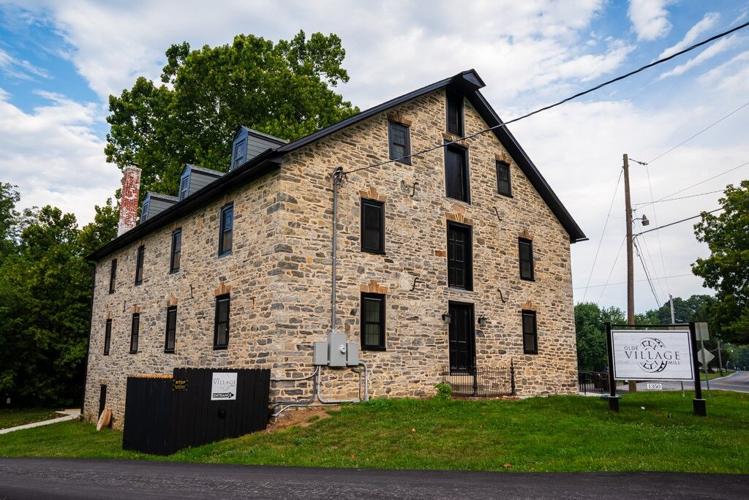
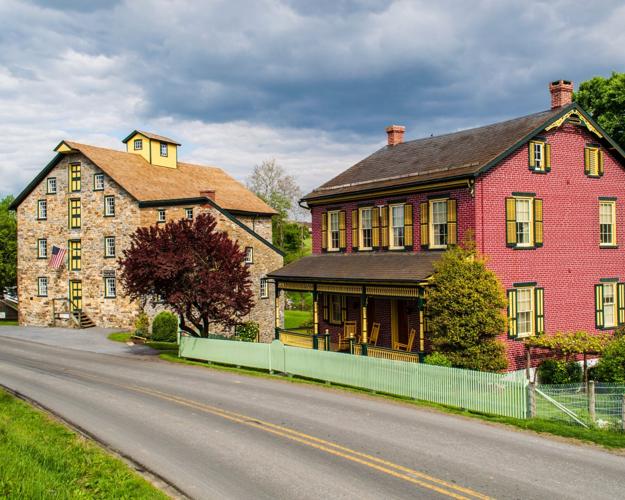
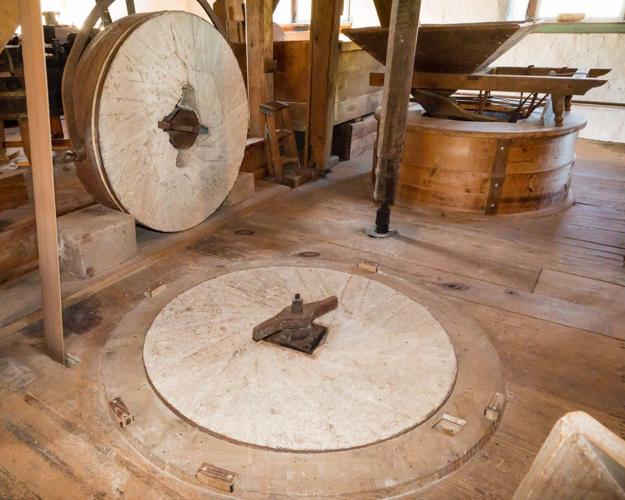

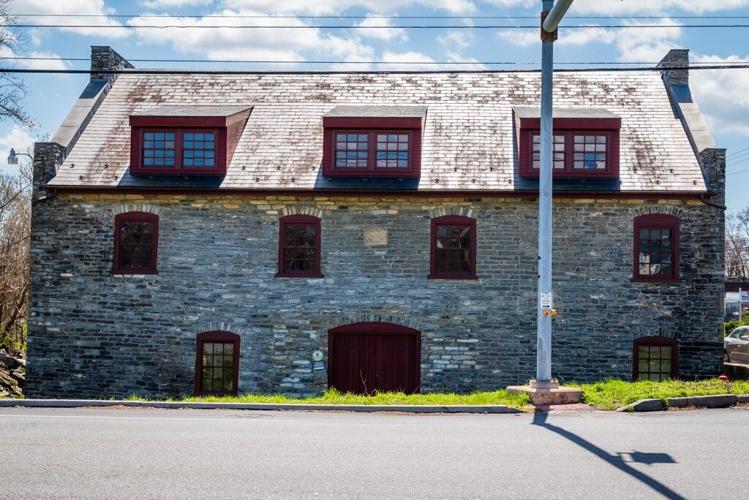
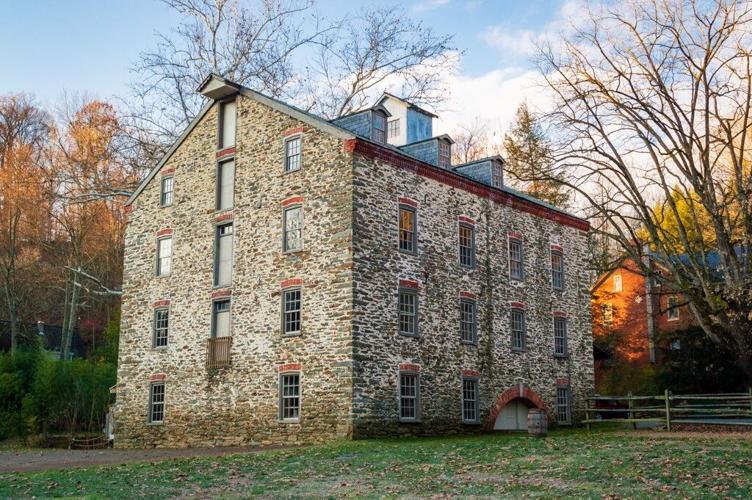

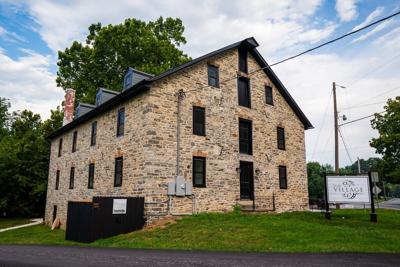
![All the mills on all the streams of Lancaster County [The Scribbler]](https://bloximages.newyork1.vip.townnews.com/lancasteronline.com/content/tncms/assets/v3/editorial/4/67/467b4b70-8580-11ee-9bb9-7730bdc8db4c/6557c02ff2897.image.jpg?resize=150%2C100)


 KEVIN STAIRIKER | Digital Staff
KEVIN STAIRIKER | Digital Staff

